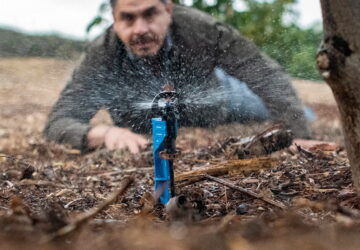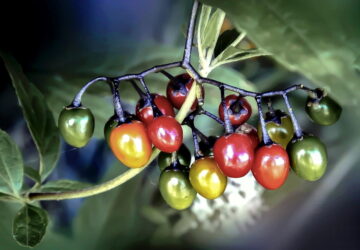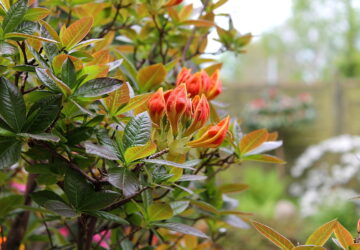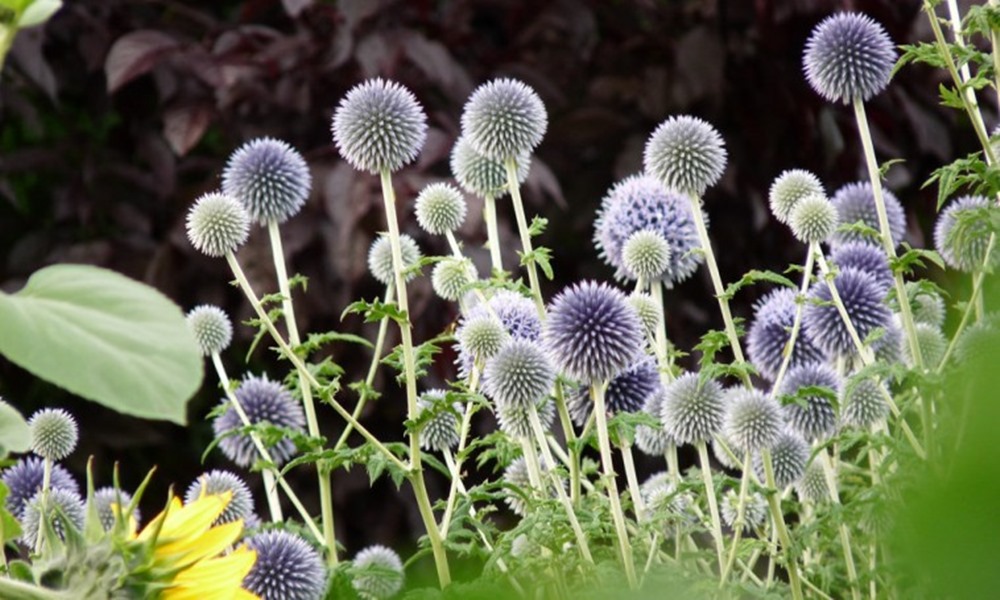Southern globethistle (Echinops ritro) is a captivating perennial plant native to Southern Europe and Western Asia, belonging to the Asteraceae family. With its striking blue-grey, spiny leaves and spherical, metallic blue flowers on tall, sturdy stems, it’s a showstopper in any garden. The best part? This plant practically thrives on neglect, making it a perfect choice for busy gardeners seeking beauty without the fuss.
Southern globethistle is a charming addition to any garden landscape. Its long blooming period, extending from mid-summer to early fall, ensures a constant splash of color and interest without demanding excessive care. Let’s delve into how to care for this unique plant and maximize its potential in your garden.
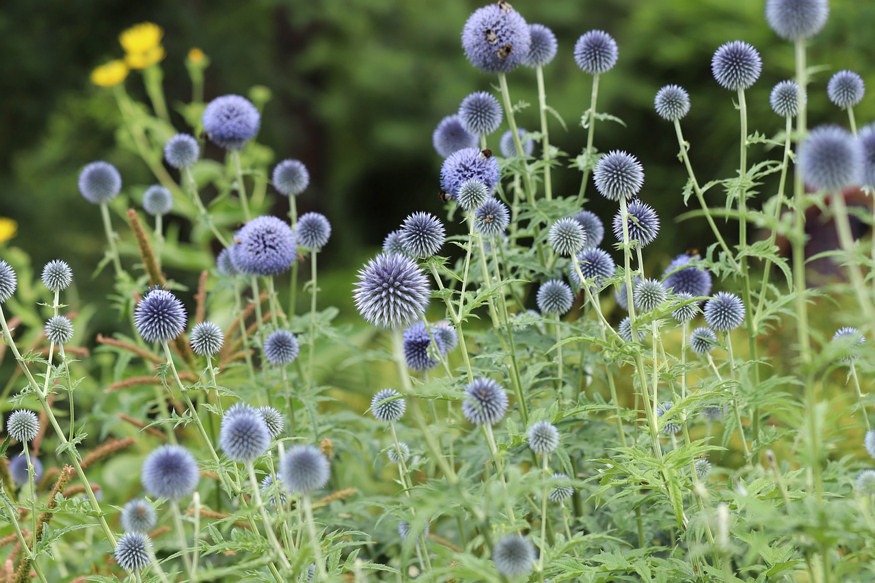
Getting to Know Southern Globethistle
Before diving into care instructions, let’s explore what makes this plant so special:
Appearance: Southern globethistle boasts enchanting blue-grey foliage and spherical, metallic blue flowers. The blooms sit atop stems that can soar to heights of up to 150 cm (5 feet), making a bold statement in your garden.
Low Maintenance: Unlike some finicky garden plants, southern globethistle is incredibly easy to care for. Its drought-tolerant nature means less watering, and it doesn’t require regular fertilization or pruning. Busy gardeners can rest easy knowing this stunning addition won’t demand much of their time.
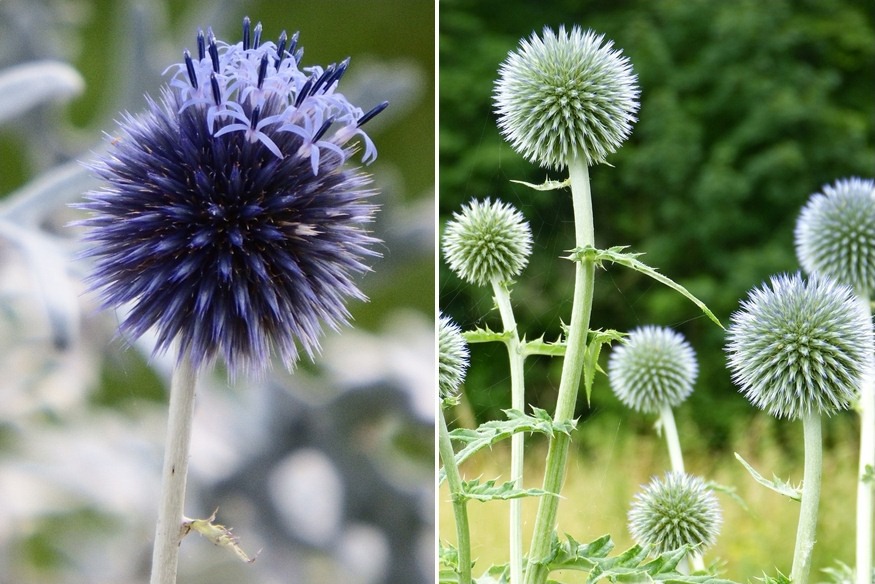
Versatility: This hardy plant thrives in various conditions. While it prefers full sun to partial shade and well-drained soil, it can adapt to different soil types. Its drought tolerance makes it an excellent choice for regions with limited rainfall.
Longevity: Once established, southern globethistle needs minimal attention. While removing spent flowers can encourage more blooms, it’s not mandatory. Periodically dividing the plant ensures healthy growth and prevents overcrowding.
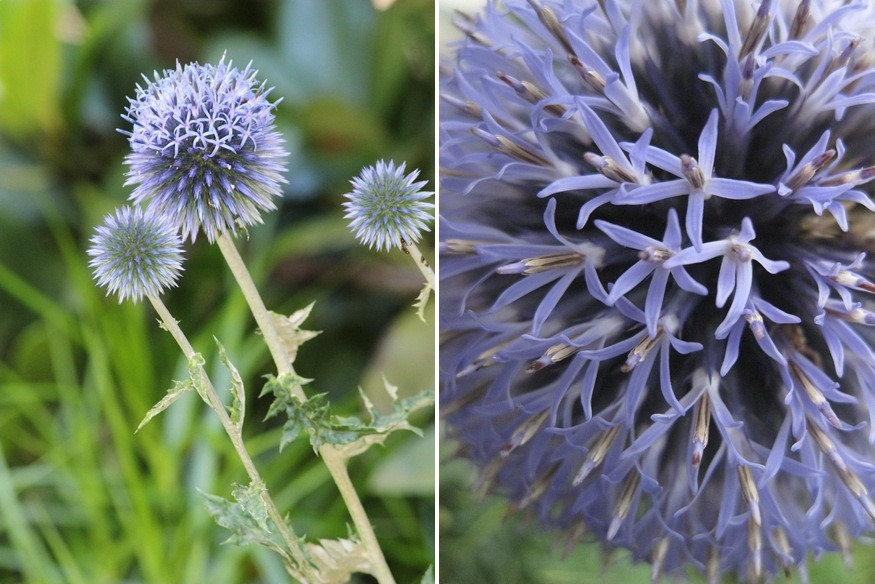
Why Southern Globethistle?
In recent years, southern globethistle has surged in popularity among gardeners. Here’s why:
Aesthetic Appeal: Its unconventional appearance turns heads and sparks conversations. Whether in a rock garden, wildflower meadow or mixed planting scheme, southern globethistle stands out as a visual marvel.

Cut Flower Delight: Don’t restrict its beauty to the garden – southern globethistle makes an excellent cut flower. Its spherical blooms add unique texture to floral arrangements, giving your indoor spaces a touch of elegance.
Pollinator Haven: The spherical, metallic blue flowers are irresistible to bees, butterflies and other pollinators. By planting southern globethistle, you’re contributing to local ecosystems by providing a vital food source for these essential insects.
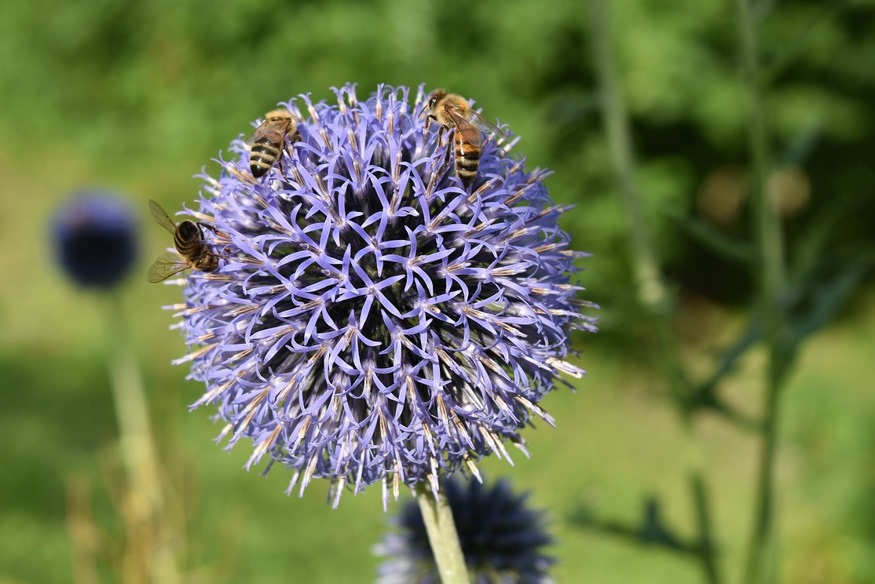
Embrace Southern Globethistle in Your Garden
In conclusion, southern globethistle is more than just a pretty face in your garden. It’s a resilient, eye-catching plant that requires minimal effort to thrive. Its striking appearance, adaptability to various conditions and role in supporting local ecosystems make it an excellent choice for gardeners of all skill levels. Whether you’re a busy gardener or simply seeking a low-maintenance, high-impact addition to your garden, southern globethistle is the answer. Watch it flourish and enchant in your outdoor haven.
